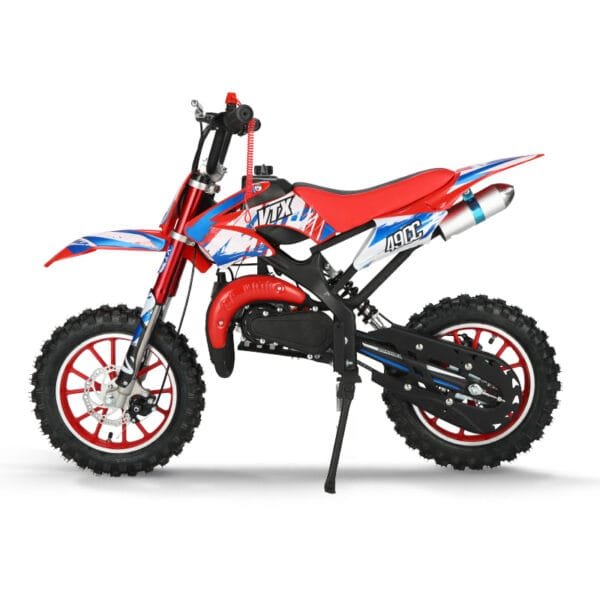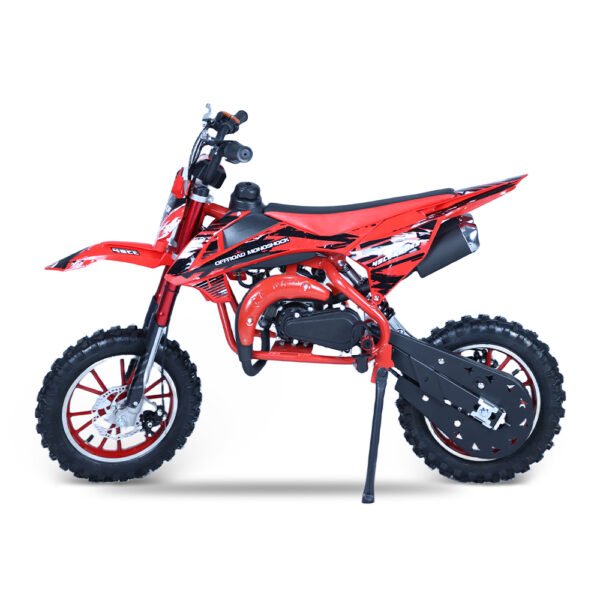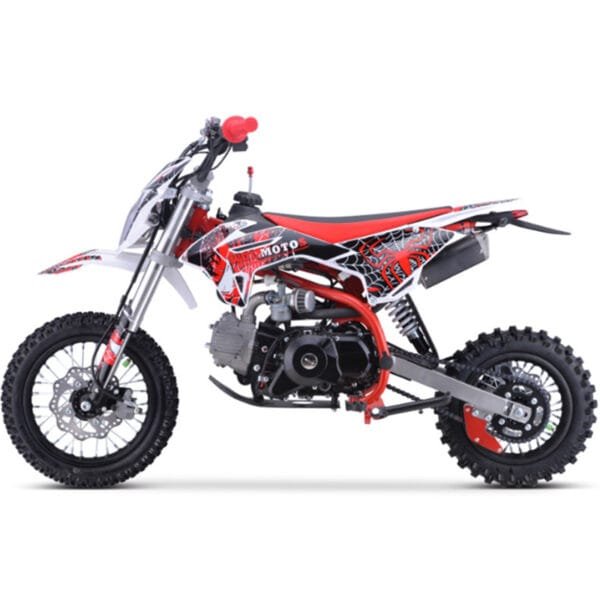
10 Facts About Dirt Bikes You Should Know Before You Buy One
10 Facts About Dirt Bikes You Should Know Before You Buy One
1. Introduction to Dirt Bikes
Dirt biking is not just a sport; it’s a lifestyle.
Known for offering adrenaline-filled experiences, dirt bikes are built for off-road and rugged environments where conventional motorcycles struggle.
If you’re interested in joining the dirt bike community, it’s important to first understand the unique attributes that set dirt bikes apart, as well as the costs, maintenance, and legalities involved.
2. What Makes a Dirt Bike Different from Other Motorcycles?
Dirt bikes are distinctly different from other motorcycles due to their lightweight build, high suspension, and knobby tires designed for better traction on loose and uneven ground.
They are typically more compact and nimble, allowing riders to maneuver around obstacles like rocks, mud, and slopes.
Unlike street motorcycles, dirt bikes lack accessories like mirrors, turn signals, or even lights in some cases.
This makes them less suitable for city streets but ideal for off-road adventures.
3. Types of Dirt Bikes: Which One Fits Your Needs?
Understanding the different types of dirt bikes is crucial to finding one that matches your intended riding style.
Each type is designed with specific features to cater to various terrains and levels of experience.
Motocross Bikes
Motocross bikes are built for racing and handling steep, challenging jumps.
With high torque and a compact design, these bikes are optimized for speed and control, making them ideal for short, fast-paced circuits.
However, they may lack the fuel capacity and comfort needed for long rides, which makes them best suited for riders looking to race rather than explore trails.
Enduro Bikes
Enduro bikes bridge the gap between motocross and trail bikes, equipped with the durability and fuel capacity needed for longer rides.
These bikes are versatile, allowing for both rugged trail rides and competitive racing.
Enduro bikes often come with larger gas tanks, better suspension, and are built to handle various obstacles.
Trail Bikes
Trail bikes are great for beginners and casual riders, designed for less aggressive trails and longer rides.
They are often lighter and simpler to handle than motocross or enduro bikes.
While they don’t have the racing power of motocross or the endurance features of enduro bikes, trail bikes offer a smoother experience on mild off-road tracks.
4. Essential Components and Build of a Dirt Bike
A dirt bike’s design is very different from regular motorcycles, focusing heavily on durability and performance under harsh conditions.
Key components include the lightweight frame, robust suspension, and high-ground clearance to handle rough terrains.
The frames are often made from materials like aluminum or steel alloy, which balance weight and strength.
The suspension system, featuring long-travel forks and shocks, is designed to absorb impacts when riding over obstacles.
The wheels are smaller, and the tires are rugged, allowing better grip on muddy, sandy, or rocky trails.
These features make dirt bikes highly maneuverable and capable of handling sudden jumps and drops.
5. Understanding Engine Types and Power Options
Dirt bikes come with either 2-stroke or 4-stroke engines, each with unique performance and handling characteristics.
Choosing between them depends on your experience level, intended riding style, and maintenance preferences.
2-Stroke Engines
2-stroke engines are lighter and deliver powerful bursts of energy with each cycle, which makes them ideal for quick accelerations and racing.
They are generally easier to repair and maintain but consume more fuel.
While they provide a thrilling ride, they may be harder to control for beginners due to their high responsiveness.
4-Stroke Engines
4-stroke engines offer a smoother power delivery and are more fuel-efficient, making them a popular choice for trail and enduro bikes.
These engines provide better control and stability, which can be helpful for riders on longer or varied trails.
However, 4-stroke engines are heavier and can be more complex to maintain, which is worth considering if you’re new to bike upkeep.
6. Consider the Terrain and Riding Style
Dirt bikes are designed for specific terrains, so understanding the type of trails or environments you’ll be riding in is crucial.
Motocross bikes perform best on tracks and closed circuits with jumps and obstacles, while enduro and trail bikes can handle forests, hills, and more rugged landscapes.
For new riders, starting on less aggressive terrains and working your way up is often a good strategy to build skills and confidence.
7. Cost Breakdown: What to Expect When Buying a Dirt Bike
Buying a dirt bike involves more than just the upfront purchase.
Dirt bike costs can vary widely, depending on brand, type, and additional features.
On average, beginner bikes may cost anywhere from $2,000 to $5,000, while advanced or specialty bikes can reach prices upwards of $10,000.
Factor in additional expenses like safety gear, maintenance tools, and any modifications you might want to customize your bike.
If you’re purchasing a used bike, have a mechanic inspect it first to avoid hidden repair costs.
The ongoing cost of upkeep, from parts to regular servicing, is also a consideration, especially if you plan on frequent use.
8. Maintenance and Upkeep of a Dirt Bike
Dirt bikes require consistent upkeep, especially if they’re used frequently on tough terrains.
Regular maintenance includes checking the tire pressure, changing the oil, cleaning the air filter, and inspecting the brakes.
Unlike street bikes, dirt bikes encounter mud, dust, and rough surfaces, making parts like the suspension and chain prone to wear.
Seasoned riders recommend investing in a basic toolkit and learning to handle minor repairs.
This not only saves money but also allows you to respond to unexpected issues on the trail.
Having a regular maintenance schedule and understanding common repairs can extend your bike’s lifespan significantly.
9. Legal Considerations and Licensing Requirements
While dirt bikes are primarily intended for off-road use, certain legal considerations come into play if you plan on riding on public land or transporting your bike across borders.
Depending on your location, you may need to register your bike, acquire a permit, or obtain insurance, even if the bike won’t be used on public roads.
In some regions, specific trail permits or licenses are mandatory to ride legally on government-owned or protected land.
For bikes used on the street or in dual-sport situations, additional licensing may be necessary.
Some enduro and dual-sport bikes, for instance, come equipped with the necessary features—such as lights, mirrors, and indicators—that allow them to be road-legal.
Always check your local laws and regulations before purchasing to ensure compliance with area requirements.
10. Safety Gear: Essential Equipment for Every Rider
Safety gear is non-negotiable when it comes to dirt biking.
Unlike standard road biking, dirt biking often involves rugged, unpredictable terrains where the likelihood of falling is high, especially for beginners.
Here’s a breakdown of the essential safety gear every dirt biker should have:
- Helmet: A high-quality, DOT-approved helmet is a must. It should be snug but comfortable, with sufficient padding and a sturdy chin strap to keep it secure in case of impact.
- Goggles: Goggles protect your eyes from debris, dirt, and dust, ensuring you maintain visibility even in challenging conditions.
- Gloves: Durable gloves help maintain a strong grip on the handlebars while shielding your hands from blisters and abrasions.
- Body Armor: Chest protectors, elbow and knee pads, and neck braces add a layer of protection, especially when tackling difficult trails.
- Boots: Dirt bike boots are designed with reinforced toe boxes and strong soles to protect your feet and ankles from impact and sharp rocks.
Investing in quality gear is essential, as it not only protects you but also boosts confidence, making your rides smoother and safer.
Conclusion
Buying a dirt bike opens the door to a world of adventure and thrill, but being informed before you make the purchase is key.
From understanding engine types and essential bike components to knowing the legal requirements and investing in safety gear, each factor plays a crucial role in your dirt biking experience.
Choose the type of bike that fits your riding style, familiarize yourself with the ongoing costs, and prepare for maintenance.
With this guide, you’re well-equipped to make an informed choice and start your dirt biking journey on the right foot.
Frequently Asked Questions (FAQs)
1. What is the best dirt bike for beginners?
Trail bikes are generally considered the best choice for beginners due to their lighter weight and easier handling.
They provide a stable and manageable experience on mild trails, allowing new riders to gain confidence and skill before moving on to more powerful models.
2. How much should I expect to spend on maintenance?
Maintenance costs vary based on the bike’s use and type.
Regular upkeep like oil changes, filter cleaning, and chain adjustments can cost around $100-$300 annually.
However, more aggressive riding on rough terrain may require additional servicing, increasing the annual expense.
3. Can I ride a dirt bike on public roads?
Most dirt bikes are not street-legal out of the box and lack the necessary features like lights, mirrors, and signals.
Dual-sport bikes, however, can be used on public roads as they meet road-legal requirements.
Always check local laws to see if modifications or permits are required.
4. What engine size is suitable for a new rider?
For beginners, an engine size between 125cc and 250cc is typically recommended.
These engines offer manageable power for learning the basics without being overwhelming, allowing new riders to improve their control and handling skills gradually.
5. Are 2-stroke or 4-stroke engines better for dirt bikes?
Both engine types have unique advantages.
2-stroke engines are lighter and deliver quick bursts of power, making them ideal for racing.
4-stroke engines provide smoother power delivery and greater fuel efficiency, suitable for trail riding and beginners.
The best choice depends on your intended riding style and maintenance preferences.


















Kason N. F. Hartman
From start to finish, your content is simply amazing. You have a talent for making complex topics easy to understand and I always come away with valuable insights.